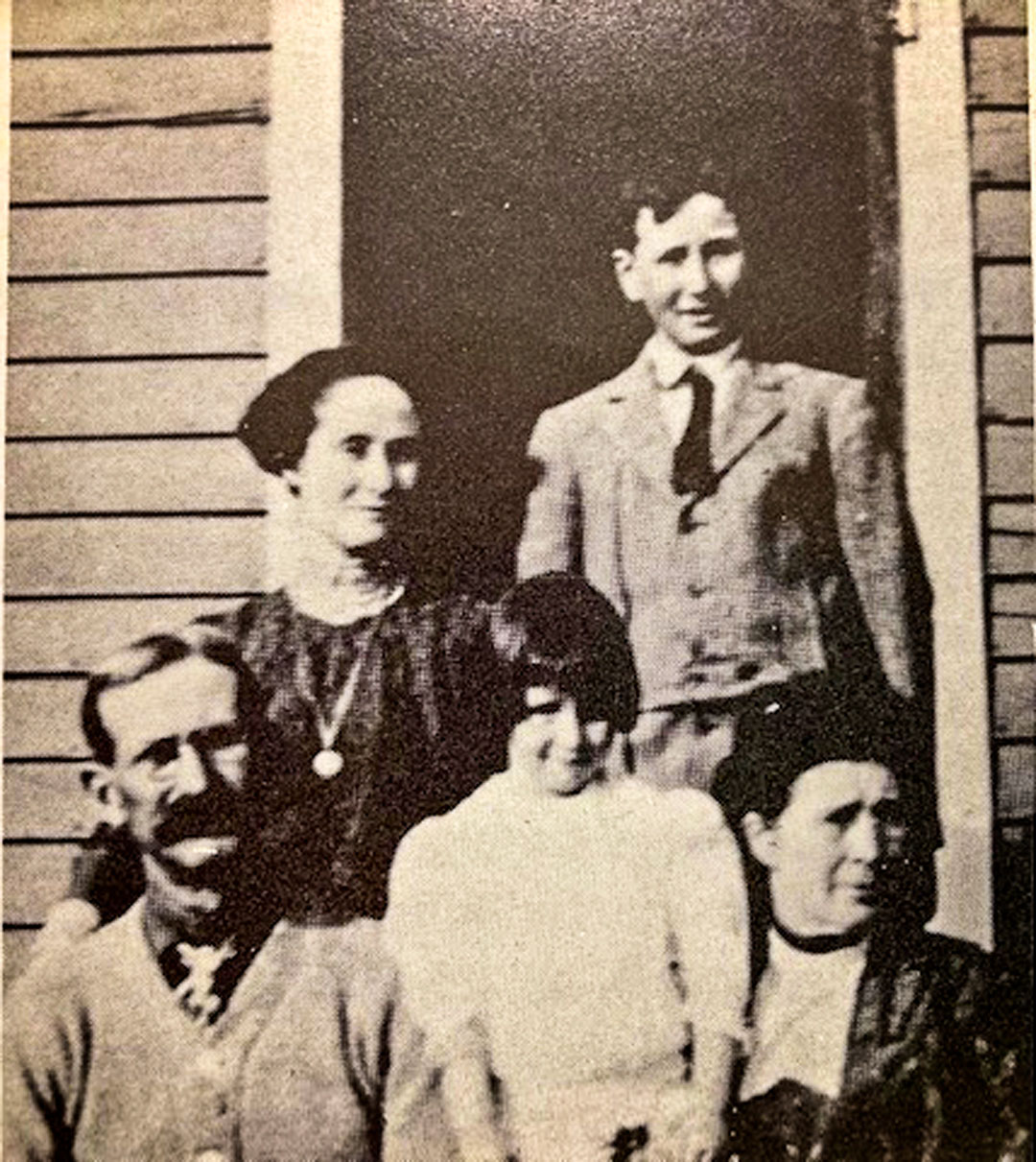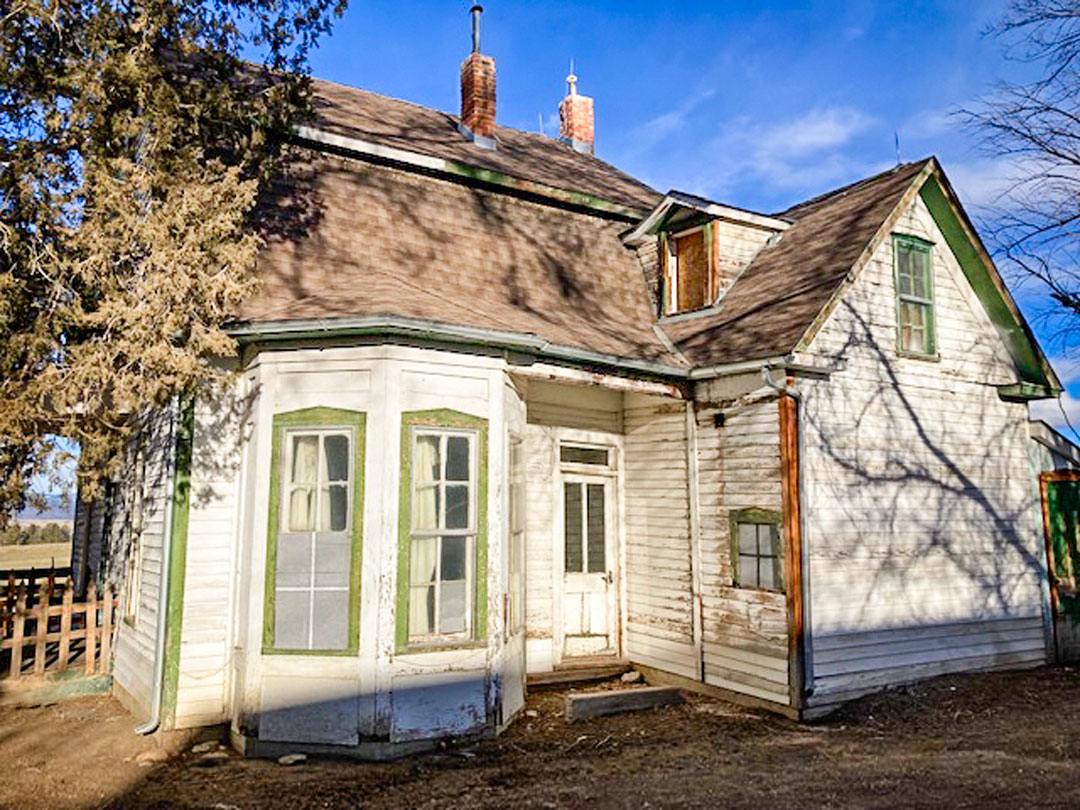Bluntly Speaking…


Family picture at front door of home. Back Row: Mary and Ray; front row: Elmer, Evelyn, and Fannie.
One of the more vibrant Wildcat histories is that of the Blunt family. It began 60 years after we became a nation in Franklin, Missouri. After son John Elmer, “John E.,” was born to John and Elmira Blunt in 1836, the family migrated to Kansas.
In the Civil War, both father and son were distinguished commissioned officers for the South: John senior rising to major general, John E. to captain. After mustering out, John E. married Mary Hansborough of Mt. Gilead, Kansas in 1864. Son Elmer was born two years later.
Mary’s parents and family had already pioneered their way west to the East Plum Creek area. Their positive news flowing back to Kansas enticed John E. and Mary into joining them in 1873. Mary took little Elmer on one of the earliest transcontinental trains west to Denver. John followed later on horseback with friends, driving cattle for their starter herds in Colorado.
Using Homestead Act land opportunities, Mary and John E. claimed Sedalia acreage north of the Hansboroughs. By 1874, they had built a 1,370-square-foot home, still standing and visible today in a copse of trees on the north crook of Highway 85.
In 1891, they had 30 milking shorthorns and their rye, wheat, sorghum and corn, grown on the banks of East Plum Creek, were among the best in the county. At that time, the dairy briefly became the largest between Colorado Springs and Littleton.
The Hansborough clan became restless again, relocating to Boulder. Mary and John E. quickly added the original Hansborough farmstead to their holdings, gaining prime acreage and better access to East Plum Creek. With this addition, the ranch exceeded over 1,550 acres and came to be called “Sunflower Ranch.”
In 1891, their 23-year-old son Elmer took a butcher’s position in Littleton. Fortune smiled at him when he encountered Fanny Brooking at a party. They were married later that same year and then were blessed with four children: Mary, Raymond, Nettie and Evelyn. Sadly, Nettie succumbed to pneumonia in her first year. All of the remaining children were educated in Sedalia’s elementary school.
When Fanny’s mother died, her father, Robert Brooking, came to live on the ranch, still also the residence of Elmer’s father, John E. Since each had been an officer on opposite sides on the Civil War, discussion could become quite emotional. Fanny had a solution. When things got out of hand, they were both sent to crush oyster shells for the chickens.
A compact woman, Fanny was anything but a shrinking violet, and she tightly ruled her household. She served up vittles for four to eight hired hands and her family, so her days were firmly scripted. She loved chickens and ran the hen house like a drill sergeant. Liquor was forbidden within her walls, but when men needed to further advocate their talking points, they moved to the milk house to confer. Frank Penley was known to join these disquisitions and provide “lubrication.”
For the era, Elmer and Fanny were quite the cosmopolitan pair. They visited the world fairs held in Chicago and San Francisco. Elmer was intimate with Douglas County, known far and wide for his service as a Douglas County Commissioner.
The Sunflower Ranch would eventually find its way into Tweet Kimball’s holdings as she expanded the Johnson property to Cherokee Ranch in 1957.

The nearly 150 year-old Blunt home is now part of Cherokee Ranch.
Article and photo by Joe Gschwendtner; photo courtesy of “Our Heritage, People of Douglas County”